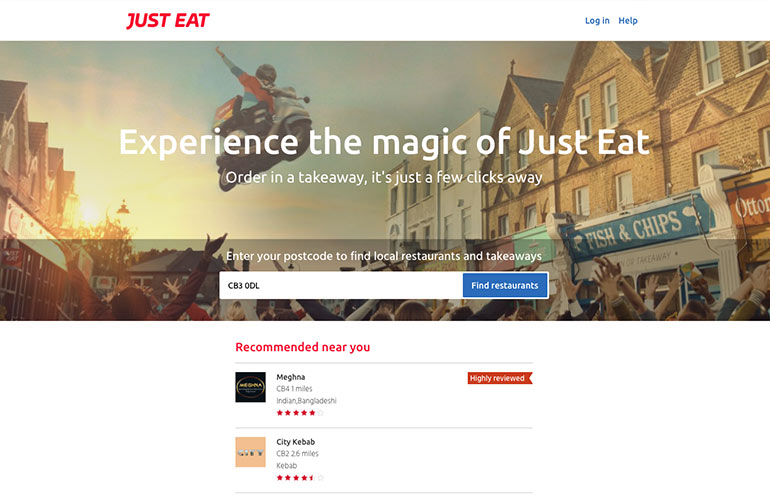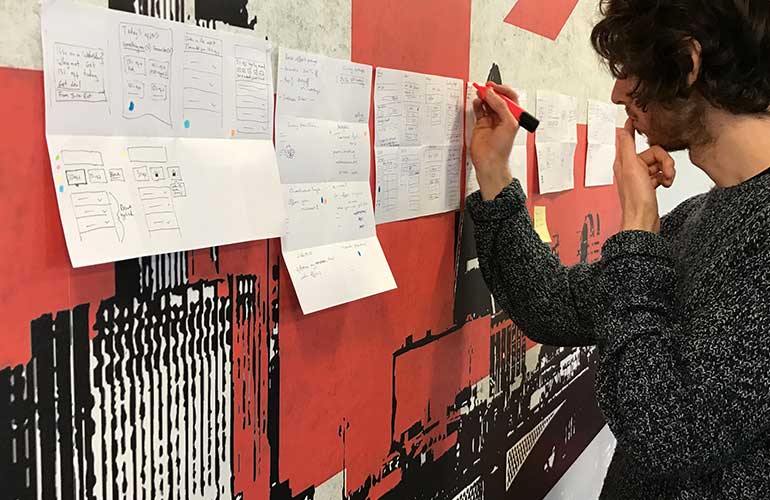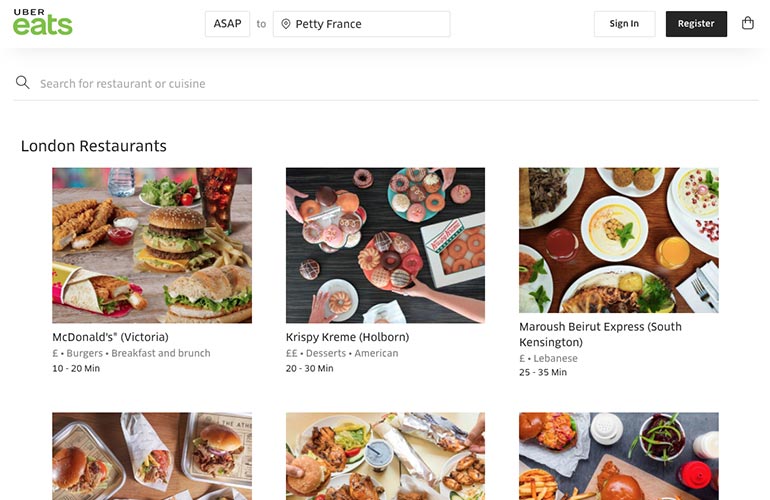Just Eat - Personalised Search
Duration: 12 months | Role: Senior UX Design Consultant | Link: just-eat.co.uk

Introduction
Just Eat are the market leading online takeaway service, not only in the UK but also in most of the international markets they are present in. Historically, the company has been lead by extremely talented software engineers. This meant that some key design decisions had been made using their own personal bias on how the product should behave and how it should serve its rapidly growing customer base. The ambition for Just Eat was to become more user-centric in its thinking and, by doing so, will keep them as the industry leader.

Becoming Human-Centred
One of the greatest challenges working at Just Eat was the internal challenge of making great technical minds think more ‘human-centred’. This often meant running co-design workshops with all types of disciplines being involved and inviting them to observe on live research sessions.
As a team, we would discuss what we observed and how best we might iterate towards a better solution for the next round of testing. This proved to be a popular activity as the team felt invested in doing the best we can to serve their loyal customers.

Collaborating With The Team
Working within a multi-disciplined team, it was important that all members were able to pitch ideas on how the product could be improved. As the senior designer on the team, I facilitated regular workshops where ideas could be generated and voted on as a team. Winning concepts would then be explored further by testing designs either within a lab setting and / or as a multi-variant test on the live site.
It was felt collaboration was key to the success of the team and that everyone could have ownership on the user experience.

Designing Personalised Search Results
To better serve customer needs, improvements to the search results page were designed. Using both qualitative and quantitative research methods to validate hypothesis statements, a series of design concepts were created that made use of the user’s previous behaviour in order to aid their selection. Using metrics such as time spent on search pages, variations in the results selected and spending behaviour we were able to understand the impact of each design approach. This allow us to swap in and out differing designs based on our perception of what intentions we believe the user to have. These intentions included ‘hangry’, browsing, pre-ordering and habitual selecting.

Multi-Variant Testing
As qualitative research provided insights into the ‘why’ users behaved in certain ways, multi-variant testing provided us insights to ‘by how much’.
Using this mixture of qualitative and quantitate analysis provided knowledge that was less assumption based and more informed when deciding which design approach is most appropriate within any one context of use.

Conducting Research
Often my role meant I would help with research activities. These included facilitating usability sessions, designing research plans, participant recruitment and conducting ethnographic research studies. This was hugely beneficial as this helped shaped how research and design departments work better together, ensuring that valuable research insights could be directly linked to a design challenge.
Research is vital to informing the design process and it is my belief that both disciplines need to work extremely closely if a project is to be successful.

Rapid Design Iterations
As research and design worked extremely closely, we was able to work within a ‘test early, test often’ methodology. This was the most appropriate for the teams I worked with as many differing ideas were being generated by all members of the team. By testing early we was able to quickly validate the hypothesis statements that were created alongside each design, allowing us to iterate on where we got design assumptions wrong.
Often designs were tested as either paper mock-ups or clickable prototypes (using Axure or InVision), therefore we was able to test well before development was due. This meant by the team the designs were briefed into the development team there was a high level of confidence in the approach taken and, more often than not, the development team were part of the ideation and research stages anyway.

Understanding Evolving Customer Expectations
Within the last few years, the online takeaway market has become increasingly crowded. Just Eat has been joined by numerous companies not only in the UK, but also the rest of Europe and North America in particular. By taking a user-centred design approach, the team looked to better understand the evolving needs and expectations of their customers. This providing a clearer understanding of the market landscape and where the company had been falling behind. By knowing where the product opportunities were allowed the team to work within a strategy that better served the needs of the customer base.

Competitor Benchmarking
To better know what Just Eat does well for their users and where it was lacking, we benchmarked heavily against competitor propositions. This allowed us to get valuable insights into differing approaches to ordering takeaway online.
The useful thing about competitor benchmarking is that they provide ready-made prototypes that could be tested in a short amount of lead time.